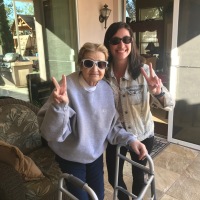The incidence of ankylosing spondylitis (AS) did not differ between men and women in a large study of military personnel, which called into question the previous assumption of male predominance for this disease.
In a retrospective study that included more than 700,000 military service members, the incidence rate was actually slightly lower for men than for women, at 26.53 versus 31.36 per 100,000, according to Michael H. Weisman, MD, of the Cedars Sinai Medical Center in Los Angeles, and colleagues.
Accordingly, the incidence rate ratio for men was a nonsignificant 1.16 (95% CI 0.91-1.49, P=0.233), the researchers reported online in Arthritis Care & Research. The sole prior population-based study on the incidence of AS in the U.S. was from Olmsted County in Minnesota from 1980 to 2009. In that study’s largely white, homogeneous population, men were three times more likely to have AS than women, but a Canadian report suggested that the incidence amongst women was increasing.
To provide an up-to-date estimate on the incidence of AS — a heterogeneous disease characterized by pain and stiffness of the spine and considerable disability — Weisman’s group analyzed data from the longitudinal Stanford Military Data Repository from 2014 to 2017. Amongst 728,556 active duty personnel, they identified 438 incident cases of AS, for an overall incidence of 27.22 per 100,000 person-years. The greatest difference between sexes was seen amongst individuals ages 24 and younger, amongst whom the incidence rate for women was 21.43 per 100,000 person years compared with 11.11 per 100,000 for men, for an incidence rate ratio of 1.93 (95% CI 1.13-3.29, P=0.015).
A total of 92.69% of patients diagnosed with AS reported having low back pain, and 83.56% had received either x-ray or MRI evaluation of the sacroiliac region. Additional clinical features more frequently experienced by AS patients versus non-AS individuals included (all P<0.001):
- Uveitis, 11.42% versus 0.32%
- Psoriasis, 7.76% versus 0.70%
- Inflammatory bowel disease, 1.83% versus 0.30%
In a multivariate analysis, the adjusted odds of AS were slightly but nonsignificantly lower among men than among women (OR 0.79, 95% CI 0.61-1.02, P=0.072).
However, the adjusted odds ratios rose significantly with increasing age:
- Ages 25 to 34, OR 2.62 (95% CI 1.95-3.52)
- Ages 35 to 44, OR 5.13 (95% CI 3.79-6.93)
- Ages 45 and above, OR 7.30 (95% CI 5.17-10.32)
A further finding was that white patients were significantly more likely to have AS compared with Black patients (OR 1.39, 95% CI 1.01-1.66).
A secondary analysis that required two separate diagnostic codes for AS supported the findings of the primary analysis for the lack of association of AS with male sex, with an adjusted odds ratio of 0.99 (95% CI 0.70-1.40).
In discussing their findings, the researchers pointed out that there were several possible explanations for why their findings differed from those of the earlier Olmsted study. One was that the previous study relied on the modified NY classification criteria for AS, which required the presence of sacroiliac x-ray changes, whereas in this study, almost two-thirds of patients underwent advanced imaging, such as MRI, that could detect more subtle changes.
The use of a military population also might have contributed to the differences in study findings. The majority of the U.S. military is younger than age 30, which is the time frame when AS symptoms first appear. Military personnel have full access to free specialty healthcare, and spinal complaints are addressed by a specific Department of Defense clinical practice guideline.
“Our findings challenge the widely held belief that AS in the U.S. occurs substantially more frequently in males than in females,” the authors concluded.
A limitation of the study was its use of a military cohort, who may be more physically fit and healthier than the broader population. The researchers therefore called for further investigations involving other populations.
Source reference: https://onlinelibrary.wiley.com/doi/10.1002/acr.24774





